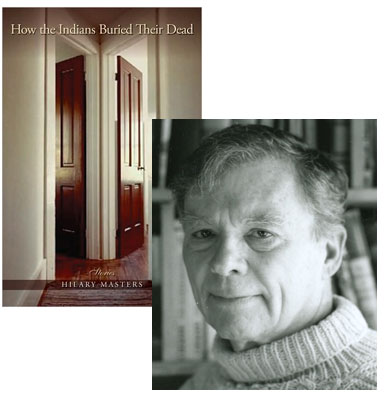Tracy Winn: Cold Snap Endures

The title story in Tracy Winn‘s Mrs. Somebody Somebody is one of the most effective short stories I’ve read in the last year,a recollection of an ambiguous friendship between two women working in a factory in post-WWII Lowell where the prospect of unionization slowly builds momentum, headed towards a ruthless and inevitable climax before circling back to its original delicate ambiguities. The following stories continue to draw upon the Lowell setting, subtly forming connections to each other but never becoming a “novel in stories,” as they say these days. Random House is publishing the collection in trade paperback this summer, but I wanted to call your attention to the original hardcover release as an example of the excellence SMU Press brings to curating the modern American short story—but may not be able to continue bringing, as the university has somehow decided the press is a non-essential function and is preparing to shut it down (ostensibly not permanently, but one can imagine how difficult it will be to persuade them to flip that switch back if it goes).
Tracy pays tribute to another SMU Press author, Cynthia Morrison Phoel, who will also be putting in an appearance on Beatrice, and after reading this tribute, I can’t wait to see Phoel’s stories. I suspect you might feel the same way.
Cynthia Morrison Phoel has the heart of Charles Baxter, the polish of Alistair MacLeod, the timing of Lorrie Moore, Stuart Dybek’s eye for design, and a subtlety of style that is purely her own. She did her service in the Peace Corps in Bulgaria and Cold Snap is a collection of stories about the people of a fictional Bulgarian town called Old Mountain.
While the lives of her characters, with their Bulgarian particularities, quickly pulled me in, I found myself falling to the much deeper concern of what it means to be human anywhere. In fact, I went down like a candlepin the first time I read one of these stories, “I Guess That Counts For Something,” in a workshop. Seconds into it, I forgot that there was a writer conveying the character’s experience. Phoel presents the power of Neddy’s passion and her struggle without ever calling attention to herself. I’ve looked closely at her craft and it is like magic. Unlike the Wizard of Oz, Phoel stays hidden behind the curtain.
Sometimes, I can’t even find the curtain. I believe that results from the inevitability of her prose and the naturally solid framework that underlies it. Listen to her here, in “I Guess That Counts For Something,” where Neddy is paralyzed by the emptiness of her life:
“By the fourth day of the heat wave, Neddy has come to see it as more of a slow roasting. It is still early, and already sweat bastes her brow, traces her spine, and blanches her breasts and buttocks. The two black dresses she had made when Lubo died are not intended for this weather: constructed of sturdy polyester, they are designed more for endurance than comfort.”
Hear the music in “bastes her brow, traces her spine, and blanches her breasts and buttocks?” Very precise wording is one of the many strengths of Phoel’s art, but I would argue that it is Neddy’s music we hear, not Phoel’s. Neddy’s life, as signaled by her dresses, is “designed more for endurance than comfort.”
19 May 2010 | selling shorts |
Hilary Masters and Chekhov’s Eye for Detail

This week’s tribute to SMU Press and its dedication to the art of the short story continues with an essay from Hilary Masters, the author of How the Indians Buried Their Dead. He’s chosen to write about Anton Chekhov, an apt choice considering that one of the stories in this collection is called “Chekhov’s Gun” (which, as it happens, manages to self-consciously invoke the principle and still surprise you with its ending, unless I suppose some blogger comes along and gushes to you about it). But that’s not even the story that’s most relevant here—and there’s plenty more brilliantly poised works in this collection, where you’ll read about futile efforts to revisit a childhood home, a trio of friends grappling with the memory of a departed fourth (along with the limits of that memory), and a perfect example of why one should just about never spontaneously decide to phone one’s exes after years of silence.
Chekhov’s “Lady with the Pet Dog” is a short story I read at least once a year and never tire of his telling of this doomed couple who are punished because they fall in love.
How he tells his story is instructive for all writers. First, how he deceives both the reader and Gurov, the main character, by details that give a false impression of Anna Sergeyvna. What about that dog?
In some versions the small dog is described as a Pomeranian, and in all it is pictured as a decorative but useless animal and so we assume the owner is the same. What impression would Anna give if the dog had been a pit bull or a great Dane?
And that lornette Anna lifts to her eyes is a pretentious article, not really useful for reading, and where does she lose it? In the crush on that sultry day when they meet the boat on the landing just before she “loses” her virtue in Gurov’s arms. Later when he tracks her to her town—where the furnishings of the best hotel’s room reveal what kind of backwater it is—she’s found another lornette, the appearance of propriety restored. For a time.
18 May 2010 | selling shorts |

 Our Endless and Proper Work is my new book with Belt Publishing about starting (and sticking to) a productive writing practice.
Our Endless and Proper Work is my new book with Belt Publishing about starting (and sticking to) a productive writing practice. 
